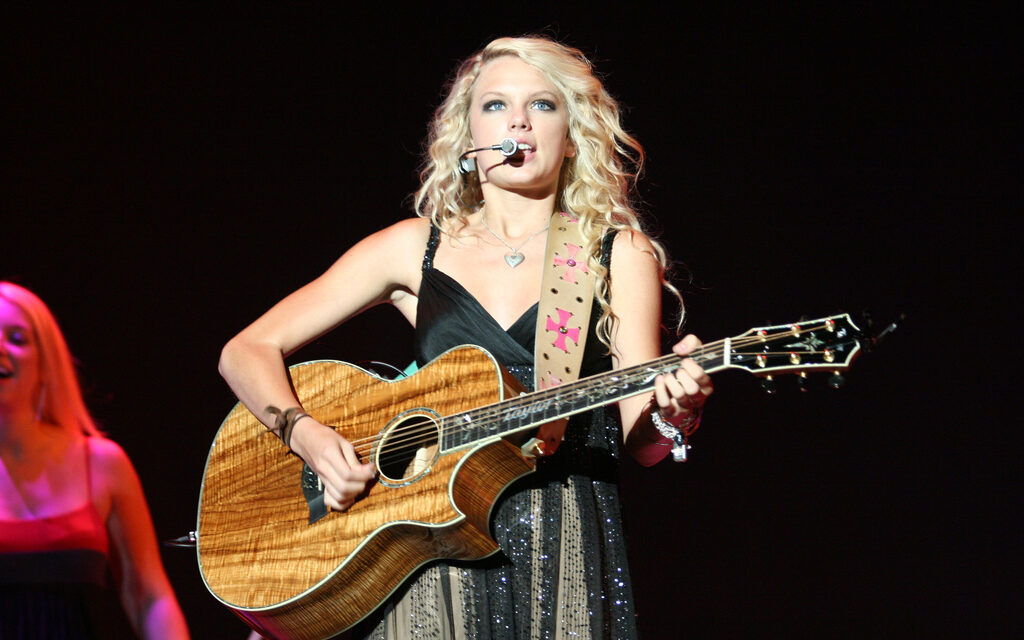Around the time Donald Trump got inaugurated, everyone started reading dystopian fiction— old dystopian fiction. It allegedly had something to do with that “alternative facts” line, which signaled to a certain demographic of watery liberal that we had arrived in hell, where treasured rules of intellect and logic, after a good long reign, had died. There was 1984 for a bit, and Brave New World and a lot of The Handmaid’s Tale. Protestors started wearing red capes and white bonnets to demonstrations outside the Supreme Court, ominously signaling that whatever decision being made would either hurl child-bearing bodies into concubinage or not. The Handmaid’s Tale got turned into a miniseries in 2017, and in 2019, 34 years after the novel’s release, Margaret Atwood published a sequel. That sequel, The Testaments, co-won the Man Booker prize, in the award’s first-ever shared win. HBO adapted The Plot Against America in 2020, and Octavia Butler’s Parable of the Sower, released in 1993, arrived on the New York Times bestseller list for the first time in September of this year, in a long-awaited turn towards a diversified consumption of the topical niche.
It would be something to say that the people I saw reading Atwood on the train were reacting to a particularly jarring American moment, and that dystopian fiction’s newfound ubiquity made sense. Their worldviews were turned upside-down and in DC, where I was being sixteen at the time, their self-images as strategic consultants were in jeopardy. How dystopian is that? So they read novels that told them they were right to be more worried than they ever had been, novels whose non-contemporariness made them all the more timeless, all the more eternal. Something about the idea of prediction, about grounding one’s frazzled self in the notion that the things they like are the things that always have been good, that the new things are a turn towards the absolute— potentially prophesied— worst. It was a kind of hyperbole which received a good deal of justified criticism. Did this panic find its meaning in an erasure of the fact that this administration did not invent American racism or state violence? The strategic consultants and would-be brunchers needed to figure out what they thought America was in light of something they didn’t expect, and it fucked them up.
I want to turn now to another cultural trend which I believe also took off on the backs of American political anxieties, albeit those of another demographic. This is countrypop.
The storm had been brewing for a while. In 2004, the New York Times ran a story about “ethnic ambiguity” as a trend piece in the Sunday Styles section. Writer Ruth La Ferla didn’t talk about racism or white supremacy, focusing instead on “the melting-pot aesthetic of the downtown scene” and “the latest youth marketing trend: using faces that are ethnically ambiguous” (La Ferla 2004). Mixed race models, she says, are armed with “an edge, a certain sexual appeal” as they wade through “mound[s] of invitations” to exclusive events; industry insiders “sense that demand is weakening for for P&G (Procter & Gamble), industry code for blond-haired, blue-eyed models.” If “ambiguity is chic” as she asserts with backing from advertising executives and the then-editor-in-chief at Teen People, whiteness was losing its vogue. Fear of teen pregnancy, with its anti-miscegenation undertones, seemed to haunt popular discourse after teen pregnancy rates rose in 2006 for the first time in fifteen years. In 2007, Jamie Lynn Spears, of Nickelodeon’s Zoey 101 and Britney-adjacent fame, announced her pregnancy at the age of 16, and the film Juno was released in theatres. In 2008, Time Magazine attributed a Massachusetts high school pregnancy pact to a “Juno effect” and Republican Vice Presidential candidate Sarah Palin’s pregnant 17-year-old daughter, Bristol, was subject to intense media scrutiny.
Then, of course, there was Obama. A biracial Black man with a white mother, his candidacy and subsequent election presented an obvious challenge to the self-understanding of white Americans for whom whiteness and an ownership of national identity went hand-in-hand. Whiteness wasn’t just out of style, it was out of the White House. Something else was (interracially) sexier. Conservative obsession with Obama’s birth was xenophobic, yes, but it was also importantly an obsession with mixed-race reproduction, with the bodily fact of his being born at all.
When we’re working with the individual as the center of our universe, as neoliberalism is wont to do, it’s easy to equate attention with power. This is part of where we get the notion that representation will be enough to mean something. For those invested in whiteness, the spectacle of a Black president was enough to be a blow. Their worldviews were turned upside down. In Virginia, where I was being eight at the time, they were now uninteresting. The future was coming for them, the seasons were passing, they were being eclipsed.
The myth of white genocide finds particular terror in the dilution of racial purity via interracial unions, and unregulated teen sexuality, especially that of white girls, is a site of acute vulnerability. The flames of white anxiety were being stoked, and while most of the pregnant white girls on TV ended up with white babies, they were very present: The Secret Life of the American Teenager in 2008, Glee and 16 and Pregnant and Teen Mom in 2009 were all immensely popular programs which centered pregnancy narratives. The girls in Secret Life, Glee, Juno and ABC Family’s Make It or Break It each get pregnant after their first sexual encounters.
In a kind of counter-move, celebrities with younger audiences, like those associated with the Disney Channel, started publicly talking about their purity rings and virginity pledges. Selena Gomez, the Jonas Brothers, and Demi Lovato were noted devotees, giving quotes to interviewers about their promises to themselves, God, and their parents. Tween and pre-pubescent audiences heard that sex was perilous, and the cool kids weren’t doing it.
There is perhaps no hero of white virginity like Taylor Swift in 2008. An earnest blue-eyed blonde from Pennsylvania with a put-on drawl for country radio, her world was one of porches, parental guidance, and love stories that end in either heartbreak or meaningful, clothes-on kisses. Her 2006 self-titled debut at the age of sixteen netted a series of country radio hits, but it wasn’t until 2008, with Fearless, that she made her mainstream breakthrough. Fearless was released on November 11, a week after the election, and became the third best-selling album of 2008 by year’s end. Taylor Swift, buoyed by the success of Fearless and its singles, took sixth place on the top-ten list.
While Fearless’ hour-long run is packed with pure-hearted devotion and overly-cruel betrayals, the lead single, “Love Story,” deserves particular attention. Its narrative centers on an altered version of Romeo and Juliet, in which no one dies and the lovers get engaged after Romeo gets down on one knee and says “Marry me, Juliet, you’ll never have to be alone/ I love you and that’s all I really know/ I talked to your dad, go pick out a white dress/ It’s a love story, baby, just say yes.” This was Swift’s first crossover single, first legitimate worldwide hit. It’s also a willful misreading of one of the English language’s most widely read pieces of literature. She wanted them to have a happy ending, and the public let her give it to them, ready as they were to see white girls chaste, content, and barreling towards patriarchally-approved marriages. “You Belong With Me,” Fearless’ biggest hit and the song which propelled her to unstoppable, front-row fame, is a story of high school romance and an overlooked girl-next-door who eventually triumphs over a boring, bitchy cheerleader. “She wears short skirts/ I wear T-shirts” is a classic line in the contemporary history of so-called slut shaming, but it’s also a lesson in purity and modesty, moderation over desire, the enduring lovability of a good girl over a high hemline. Swift’s narrator has patience, and the central image of the chorus is her waiting, desperately, for this boy to come to his senses:
“Can’t you see that I’m the one who understands you/ Been here all along, so why can’t you see?/ You belong with me/ Standing by and waiting at your back door/ All this time how could you not know, baby? You belong with me.”
We can pretend it’s about authenticity over vanity, but we know it isn’t, regardless of Swift’s potential intentions. She understands him, they share values, they belong together; this cheerleader is an other, a momentary distraction. Wrapped up in Swift’s valorization of ‘emotional’ connections over ‘shallow’ ones is an insistence that after the immediate thrill of a passing interest—of a trend, let’s say— people want what they know, what makes them feel seen and reflected back to themselves. Swift’s attentive listener will outlast the allure of the cheer captain; that she plays her own music video adversary in a brown-haired wig is only a thrillingly clear admission, even if accidentally, that we are supposed to be rooting for the timelessness of innocent blondes. This was a wholesome girl: she wore sparkly dresses and cowboy boots, was close with her mother, believed in true love. What could she be doing wrong? Even before Kanye West’s infamous interruption of her 2009 VMAs acceptance speech, she was an image of white womanhood that needed protection, that needed to be defended.
Swift wasn’t just unambiguously white, she was aggressively white. Her success demonstrated not only that girls would listen to a genre largely dominated cowboys and hypermasculine men talking about trucks, but also that they could redefine it. Countrypop was the way out of being classed as music of the past, or at least a turn towards a kind of past that, rather than being outdated, conjured up images of home, simplicity, and family values. It was cute and admirable. Be nice to girls because they to turn into wives, don’t break hearts, remember the town you grew up in.
The next few years saw countrypop aesthetics creep into mainstream entertainment, usually in contrast to a life of glamour which was ultimately unfulfilling. The value of the “certain sexual appeal” which belonged to mixed-race models in 2004 diminished because tweens were being told that neither modeling nor sex was worth aspiring to. The Disney Channel’s Hannah Montana is a prime example of this—popular since its premiere in 2006, the show followed the double life of Miley Stewart/Hannah Montana, who was a typical kid by day and wig-wearing popstar at night. The premise already centered a preservation of ‘authenticity’ and ‘normality’ that fame would corrupt, but it wasn’t until 2009’s Hannah Montana: The Movie that her country roots were brought to the forefront. Set during a trip to rural Tennessee, Miley has a romance with a cowboy neighbor and works to save her hometown from a developer. Swift herself makes a cameo, and she helped write the film’s final number, titled “You’ll Always Find Your Way Back Home.” After being introduced in the film, Miley’s horse—named Blue Jeans, of all things—becomes a central figure for the final two seasons of the series. It is probably worth noting that the chief bitches in the HM franchise—the mean girls at school and the publicist who encourages Miley to focus on her career over her family—are also the non-white characters who get the most screen time.
In 2010, Taylor Swift became the youngest-ever person to win Album of the Year at the Grammys for Fearless. At the next year’s ceremony, a countrypop trio which was then called Lady Antebellum performed three songs and won three awards, including Record of the Year. 2011’s season of American Idol came down to two young country singers—sixteen-year-old Lauren Alaina and seventeen-year-old Scotty McCreery. It’s a well-worn trope that young singers with large followings dabble in acting and vice versa, and the post-Swift landscape saw TV actresses expand to music through country, rather than pop, as the genre of choice: iCarly’s Jennette McCurdy put out 2010’s Not That Far Away through Capitol Nashville, Jana Kramer of One Tree Hill made a full pivot to country stardom with a self-titled album in 2012, and Pretty Little Liars star Lucy Hale released Road Between in 2014. Narratives about the women of country unfolded on screen, too: the 2010 film Country Strong starred Gwyneth Paltrow as a troubled singer and Tim McGraw as her manager husband and Nashville, a primetime drama about feuding stars and the challenges of the industry premiered to 8.93 million viewers on ABC in 2012.
So there it was: whiteness was trending, with the suggestion of something beyond coolness, like staying power. Narratives about small towns and romances that skipped from engagements to old age soothed the eyes and ears of everyday white supremacists; it didn’t matter that Taylor Swift almost definitely voted for Barack Obama or that she would eventually, belatedly, distance herself from the neo-Nazi posters who praised her as an “Aryan goddess.” Obama-era countrypop was a balm for the white and anxious, a recentering of an increasingly desegregated pop-culture landscape around Nice White Girls and hometown heroes. This, they told themselves, was what America was—not the geographic movements of young people towards cities or demographic projections about a non-white majority by 2050. These images fed dreams, even if unserious ones, of a white nationalist utopia, until they exploded when Donald Trump said he would “Make America Great Again” in 2015. By then, Swift had turned to pop and the idea of publicly liking mainstream country music again signified something outdated, a potential association with white supremacy that was troubling to metropolitan whites not because they were antiracist but instead because they feared being deplatformed on the basis of that association. I am not particularly interested in debating the merits of Swift as an artist or countrypop as genre; I know about her nonwhite fans, her praiseworthy turns of phrase, the twitter stan account that had to go dark while its administrator was incarcerated for refusing to join the IDF. This is just to say that there was a while when a certain kind of white girl with a guitar was everywhere, and their omnipresence wasn’t as apolitical as they, themselves, might have wanted to be. Swift’s recent endorsements of democratic candidates don’t change the lessons we learn from her rise to fame: whiteness evangelizes, it hungers for stable hegemony, and it sees what it wants to.


